By Tace Clifford, BabyDrive.com.au founder
Do you struggle to fit child seats in your dual cab ute? Or are you considering a ute for your family car? Then you want to read this first and find out why a legal loophole means installing child seats in utes is not as simple and safe as it should be.
Over the last few years, while installing child seats into nearly all makes and models of dual cab ute, I have struggled, sworn and cried and once smiled (thank you Mitsubishi Triton designers) during the process.
Installing child seats in utes seemed to be unnecessarily difficult and I just could not understand why it was so different from installing them in cars.
To get some answers, I spoke with Australian Child Restraint Resource Initiative (ACRI) Director Robert Newman, ANCAP Chief Executive Officer James Goodwin and Kidsafe Queensland CEO Susan Teerds.
All these experts confirmed that Australian Design Rule 34 (ADR34) regulating the design and construction of child restraint top tether anchorages in cars does not apply to utes because they are classified as commercial light goods vehicles.

This is horrifying because utes are massively popular, they have been some of the top selling cars in Australia for years and are clearly used and marketed as family cars.
“One of the biggest problems we’ve got is that those vehicles don’t meet the Australian Design Rules for child restraint anchorages,” said Robert Newman.

He explained that the anchorages in utes often do not meet ADR34 or make child seat installation problematic in several ways, including the distance between the upper tether anchorage and the child restraint being too close, the upper tether anchorage not being accessible when you’ve got one child seat already installed, forcing you to take one out before you can fit another, and the vertical angle of the rear backrest making head-flop more likely for forward-facing child seat passengers.
“That means that a lot of the child seat manufacturers are a little bit upset about this, because that can reflect poorly on their products because they’ve made a product that has to fit to vehicles with the Australian Design Rules and yet out in the reality those two things don’t fit, it’s like fitting a square peg in a round hole.”
James Goodwin agreed. “We don’t believe it is right,” he said, adding that ANCAP doesn’t treat utes any differently to cars and SUVs in its testing.
“They carry children and increasingly, given now they are the top sellers in this country, why should commercial vehicles be viewed any differently than passenger vehicles and SUVs?”

Susan Teerds highlighted that from a parent’s perspective, the instructions that come with child restraints contain diagrams and wording that describe the type and location of anchorages as specified in ADR34, but that in many cases these look nothing like the anchorages provided in the ute or its instruction manual.
“It’s very bad that these parents are further confused by the manufacturers’ instructions not corresponding to the child restraint manufacturers,” she said.

“They look at their car manual and they look at the child restraint manual and it doesn’t make sense to them at all. So what do a lot of them do? They don’t even connect up the tether strap or they’ll hang it around the headrest.”
James Goodwin agreed that the confusion and frustration parents experience must result in some incorrectly installed child seats.
“Ease of use is a big thing. If you’ve got a mother who’s wanting to quickly put a child restraint into a car, then incorrect installation is a big problem,” he said.
All three experts brought up the Nissan Navara, which has three woven loops for top tether anchorages. This was interesting because I have experienced difficulty with this model, and the Navara-based Mercedes X-Class, during reviews.
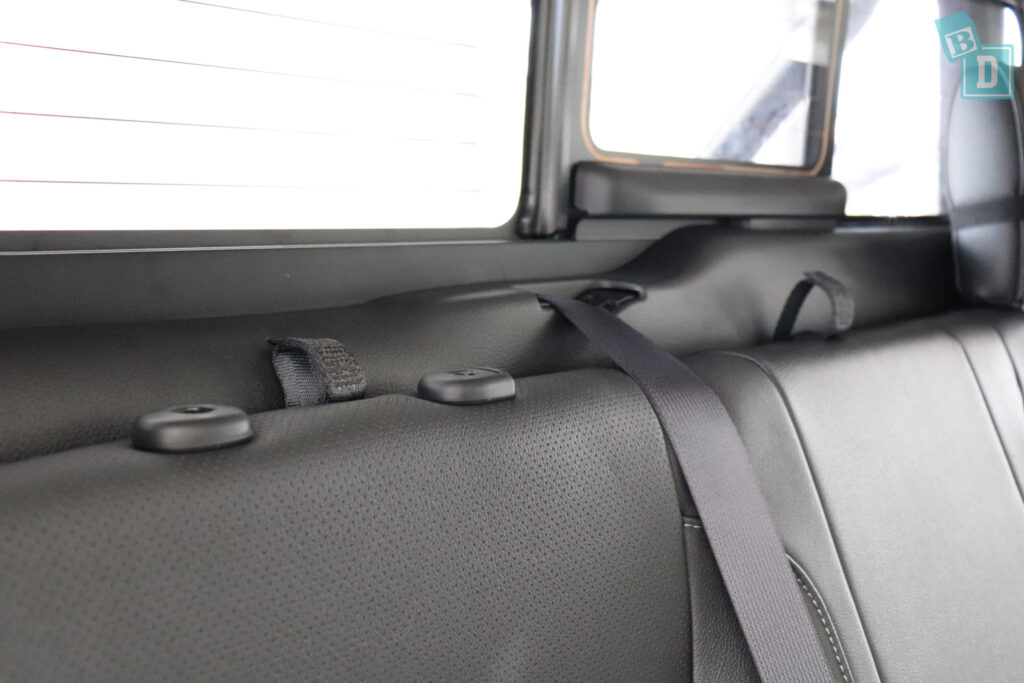
Susan Teerds used the Nissan Navara as an example of the difference between what is in the child restraint instruction manual, based on ADR34, and what parents are faced with in reality.
“The pictures in the book (that came with the child restraint) all show metal anchor points and I’ve just bought a Nissan Navara, so I’m reading the vehicle manual and I’m thinking what are these loops? The car manual says to go through the loop and hook it to the side, but in the child restraint manual it says that’s not what I’m allowed to do,” she said. “As a new parent, how confusing is that?”

Robert Newman agreed. “It is a complete and utter mystery to us, how the Nissan Navara, for example, has three loops (as top tether anchorages),” he said.
When I reviewed the Navara in early 2018 for BabyDrive, I asked a Nissan salesman if the webbing loops were safe to have three child seats installed at the same time but could not get a concrete answer, nor could the salesman get clarity on this from Nissan.
Some of the main concerns with the woven loop anchorages are that having a metal tether hook attached to a woven loop and rubbing on it as the vehicle moves, will surely make the loop fray quickly. More alarmingly, in an impact, having more than one tether hook attached to a woven loop could cause each child seat to pull on the loop and cause a ricochet effect.

Robert Newman expressed his concerns with this and said that he too had struggled to get any answers out of Nissan.
“The instructions only refer to fitting a restraint to one position aside and then running the tether through to the centre. When this Navara first came out we tried to get clarity over ‘does this mean you can fit three child restraints to the vehicle?’ and there has been no official answer to that,” he said.
“The reason they can get away with that is because it doesn’t even have to have any (under ADR34). It’s an amazing scenario, that the manufacturer, just because it doesn’t have to have any and therefore meet the requirements, can do what they like and everybody tap dances around in the middle trying to make strawberry jam out of a mud puddle.”
Through a journalist contact, I eventually obtained confirmation that Nissan believes you can safely fit three child seats into a Navara, from none other than Nissan’s chief global product specialist for light commercial vehicles, Pedro de Anda.

“Yes, it’s safe enough, for sure. This strap that we have helps us put the (child) seat in for the three positions in the rear seat,” he said. “The safest would be the side seats because of the Isofix that we are now adding.”
When I spoke with ANCAP about the Navara’s woven top tether straps, James Goodwin revealed that in original crash-testing, the Navara’s fabric top tether loops snapped but were rectified before the model went on sale.
“Part of the webbing loop for the routing of the child restraint top tether failed during the frontal offset test,” he said.
“This failure was communicated to the Administrator of Vehicle Standards, Department of Infrastructure and Regional Development. Nissan redesigned the webbing loop and ANCAP conducted a satisfactory second frontal offset test. Nissan has confirmed that all new dual cab Nissan Navara vehicles have been fitted with this improved webbing loop.”
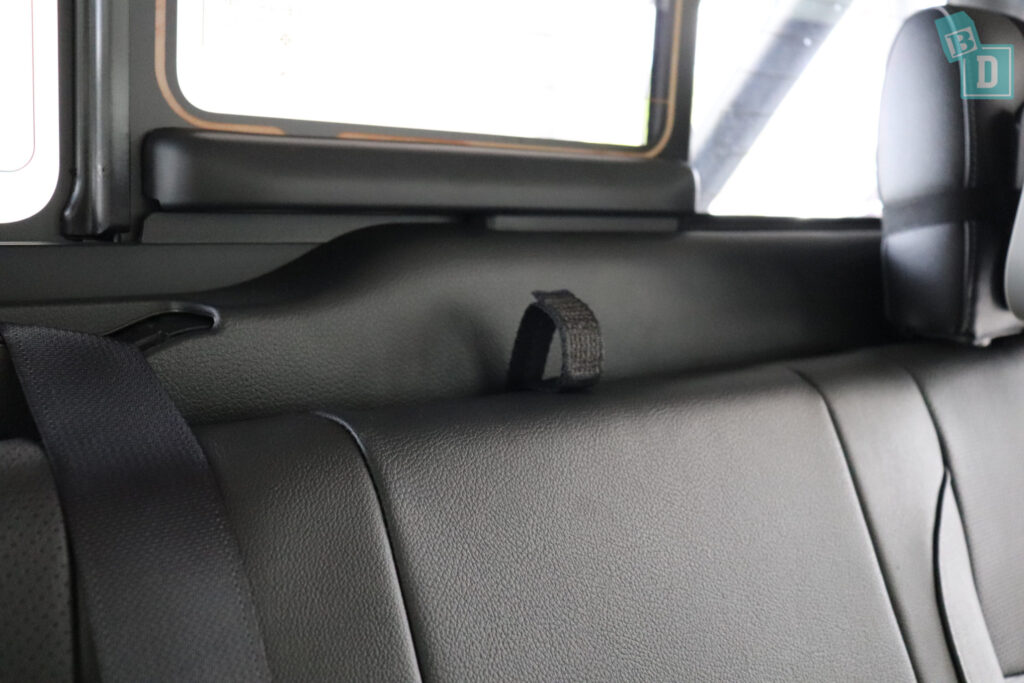
Bear in mind that ANCAP only tests brand new vehicles with tether straps that have not been subject to months or years of wear and tear.
The Toyota HiLux is another example of using woven fabric top tether loops, although the final connection point is metal and Toyota has confirmed that the HiLux is only suitable for two child seats. But it’s far from ideal, as I have experienced first-hand in BabyDrive testing.
Robert Newman pointed out Toyota’s recent advertising for the HiLux included a dad carrying a baby capsule to the vehicle.
“Now that is sort of implying we don’t have a problem putting child restraints in this ute. When in actual fact they do have a problem,” he said.
“With loop style tether anchorages, you can’t fit some of the tethers through some of the loops as the adjuster blocks crash on the first loop so you can’t actually feed the adjuster block through to shorten it. Baby capsules are notorious for this in dual cabs because you often can’t adjust the top tethers short enough.”


The good news is that change is on the horizon, and ADR34 has been updated to include commercial light goods vehicles. This comes into force from November 2019.

Also as of 2018, ANCAP has included child occupancy protection in its crash testing, with utes treated exactly the same way as any car or SUV.
“Child occupancy protection is now one of the four key pillars of assessment that we rate a vehicle on,” said James Goodwin. “The test results are based on how well the child occupants seated in those child restraints perform in terms of injury risk.”
James Goodwin agreed that a ute that was given a five-star rating three years ago would be unlikely to get a five-star rating if it were tested today and that if ute manufacturers were unable to get a five-star ANCAP safety rating with their current top tether anchorage design, then this would effectively force them to change the top tether anchorages regardless of regulations.
“We have raised the requirements significantly,” he said. “If manufacturers were to release a facelift or brand new model ute it would have to be tested to our current criteria and child occupancy could be looked at.”
The new ADR34 comes into effect as of November 2019 but only for new models that are launched on or after that date. So it is business as usual for utes that are already on the market until November 2022 when it will become mandatory for all commercial light goods vehicles to comply with ADR34.
It is worth noting that including a child restraint anchorage of any kind remains optional and ADR34 only applies if there is one or more top tether anchorage or Isofix point installed.
Utes tend to have a ten-year life cycle, meaning the Ford Ranger and Volkswagen Amarok, that were both launched in 2011, are likely to be the first utes that will be subject to the new ADR34, followed by the Isuzu D-Max and Holden Colorado that came out in 2012 and 2013.
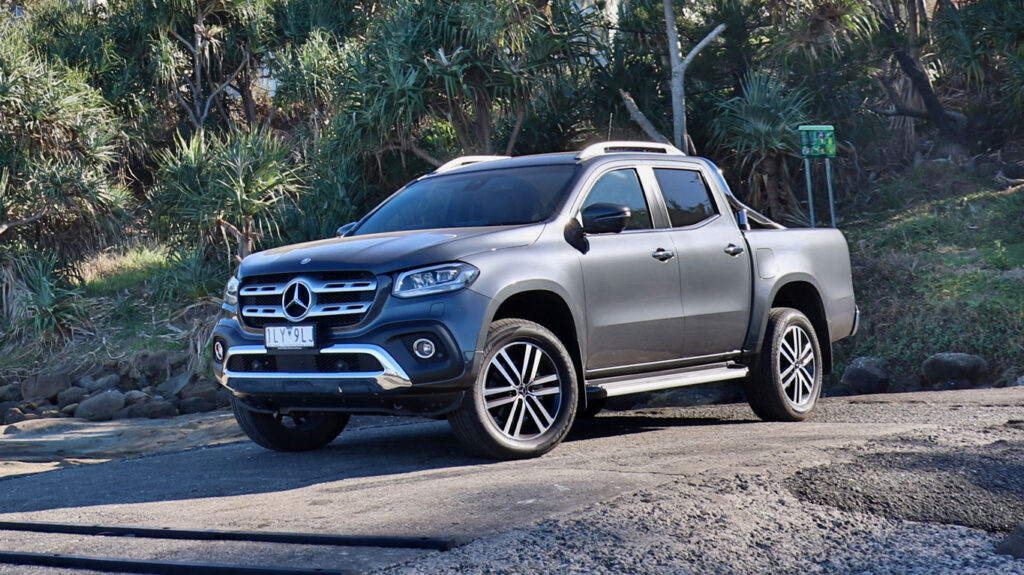
The Toyota HiLux and Nissan Navara both launched in 2015 so their top tether anchorages will need to become ADR34 compliant before these utes are due for replacement. The Mercedes X-Class, which also has the Navara-style woven loop tether anchorages, was only launched in 2018 and slipped through the new ANCAP testing net by a matter of months.

Susan Teerds said she fought hard to have ADR34 changed and succeeded where others told her it would be too difficult.
“It’s just ridiculous, even Kidsafe in other states said ‘look you just won’t be able to get it changed', but that’s our job, we have to try. And then it did change because it didn’t make sense,” she said.
“It has changed, and this was work that I did that I am very pleased about. It just says that goods carriers, if they’re going to have child restraints, then they are not exempt from ADR34.”


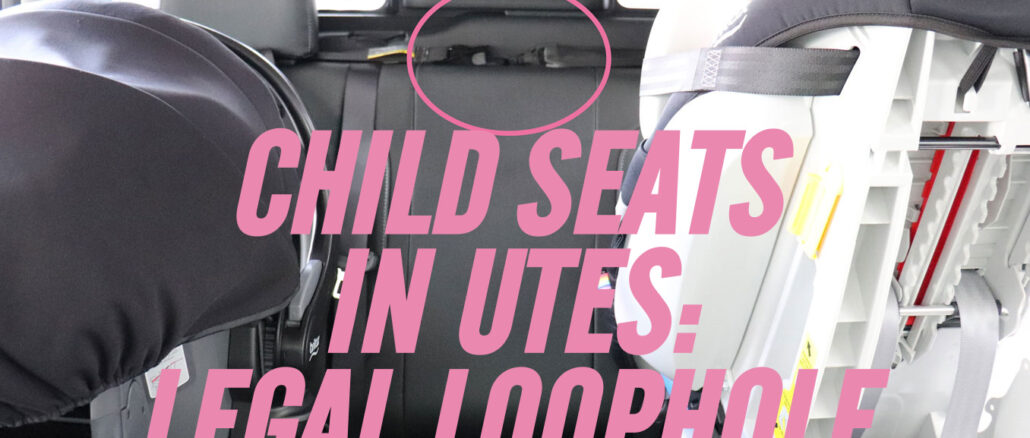
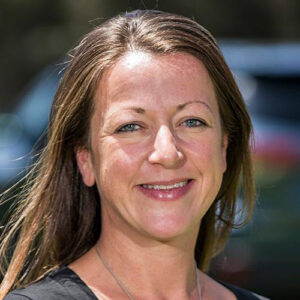


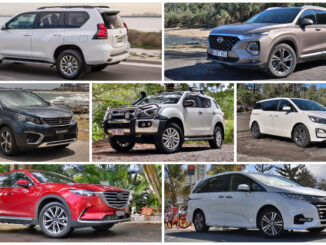
What about a single cab?
This is about dual cabs
This irks me no end, and I wish it didn’t. People buying commercial vehicles as a family car. I just can’t understand the popularity of these utes other than a way to make the owners feel tough on the roads. The tray isn’t all that practical, and the cabin isn’t nearly as nice as an actual passenger car… nor is the ride. Nor is the safety.
If hubby is in the trades, surely an actual practical trade vehicle makes more sense, and buy a purpose built car for the family to get around in… an SUV or better yet, a station wagon.
I have horses and regularly go to competition or stay away competitions and I have a baby.
I like utes best as I can put all of my horse feed and gear in the tray and not worry about getting the interior dirty or having hay inside the car.
It would not be practical for me to tow the float with the ute and my partner drive with us in a sedan! I also can’t tow my float with a sedan or a station wagon as the tow rate isn’t high enough.
Wow just ‘buy a purpose built car for the family’ and then pay for two vehicles on the road – lots of spare cash have you? With a single income the vehicle has to be dual purpose – and it is a practical tradie vehicle – the tray is big enough for a plasterers tools of the trade, and the dual cab can fit a few power tools or other items you don’t want unlocked out in the tray. These can be unloaded and the family/ shopping/ laundry fits in. It’s about practical and affordable. Not as nice? Sounds like you’re a spoilt brat Benno, wishing you had a dual cab to help you feel tough and make up for some other inadequacy.
You irk me with that stupid comment Benno, you probably should think before you speak. We live in the bush and always need to stock up on supplies when we go to town so a commercial vehicle suits our family extremely well with what we have to carry, Kids and all on dirt roads.
We find it very comfortable and meets our needs and we are very down to earth people, and don’t feel tough at all. I agree with Spencer, I think you are jealous and really want one yourself.
Benno you’ve got rocks in your head and a twisted view on reality. Tradies who have kids aren’t buying a 2nd car just to pick the kids up from school. I didn’t purchase a dual cab ute to look tough. I thought it would be a good choice to carry tools, material and also drive the kids to school. You won’t see me stopping home to jump in a second car to go pick the kids up. What a waste of time and money
When you need a trade vehicle and both parents work, its not so black and white..
Are they simply not safe for children in seats, or not as safe as an SUV or car?
Should anchor points be installed at all? This is terrible that you can purchase a ute as a family vehicle and not be informed.
The increased chance of fitting seats wrong is the biggest issue here, and long term durability of fabric on fabric rather (or metal on fabric) than metal on metal is questionable. It also seems obvious that attaching multiple child seats to a fabric loop is not as strong as dedicated metal ones.